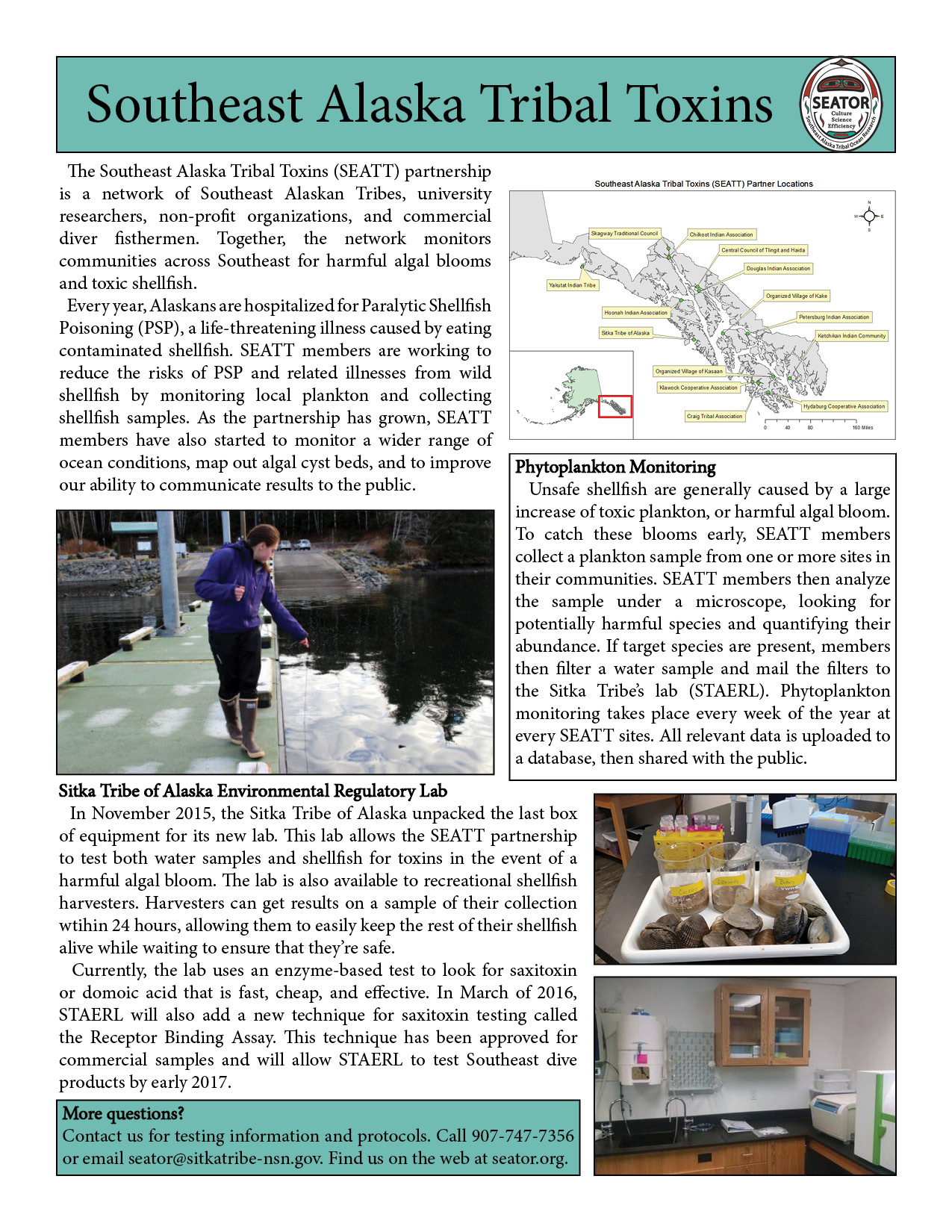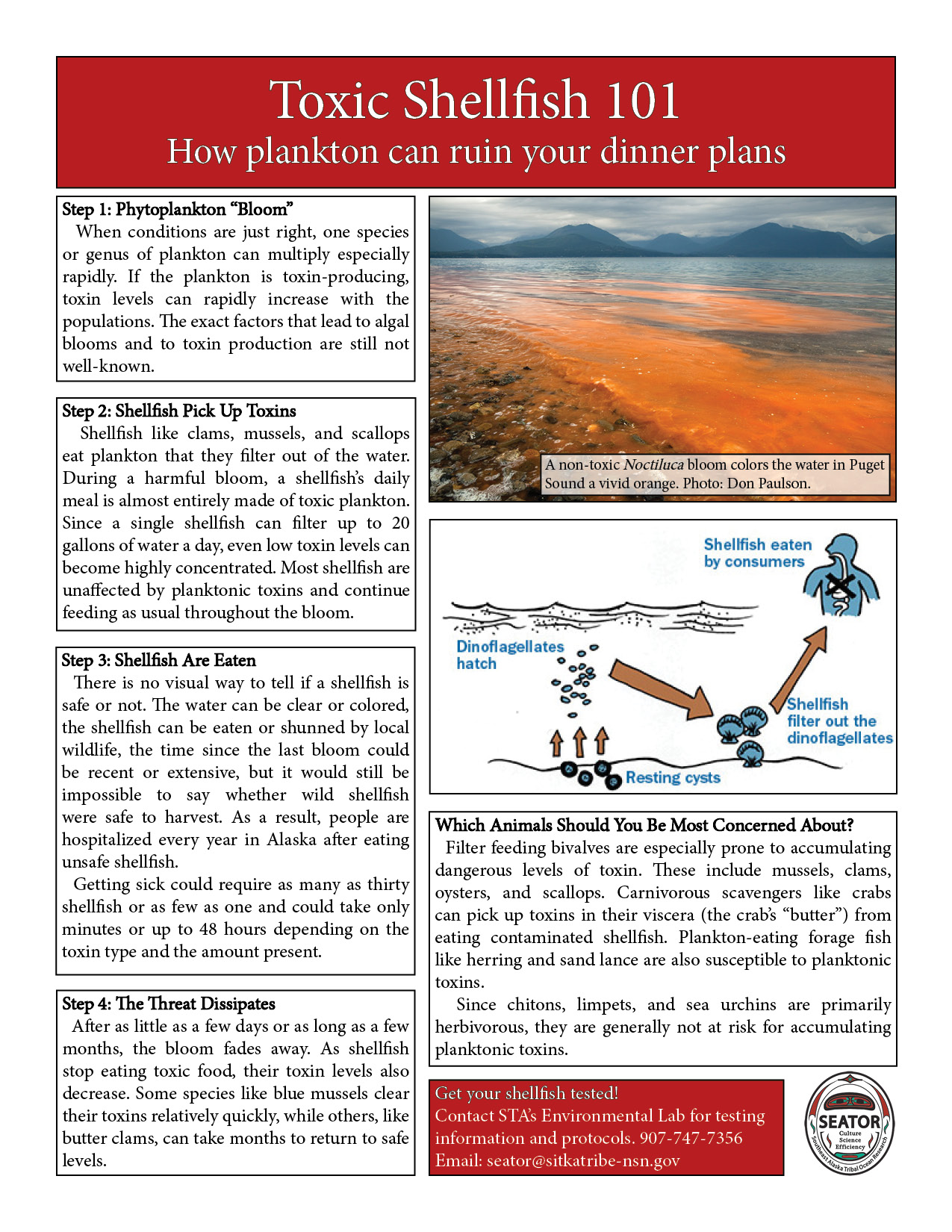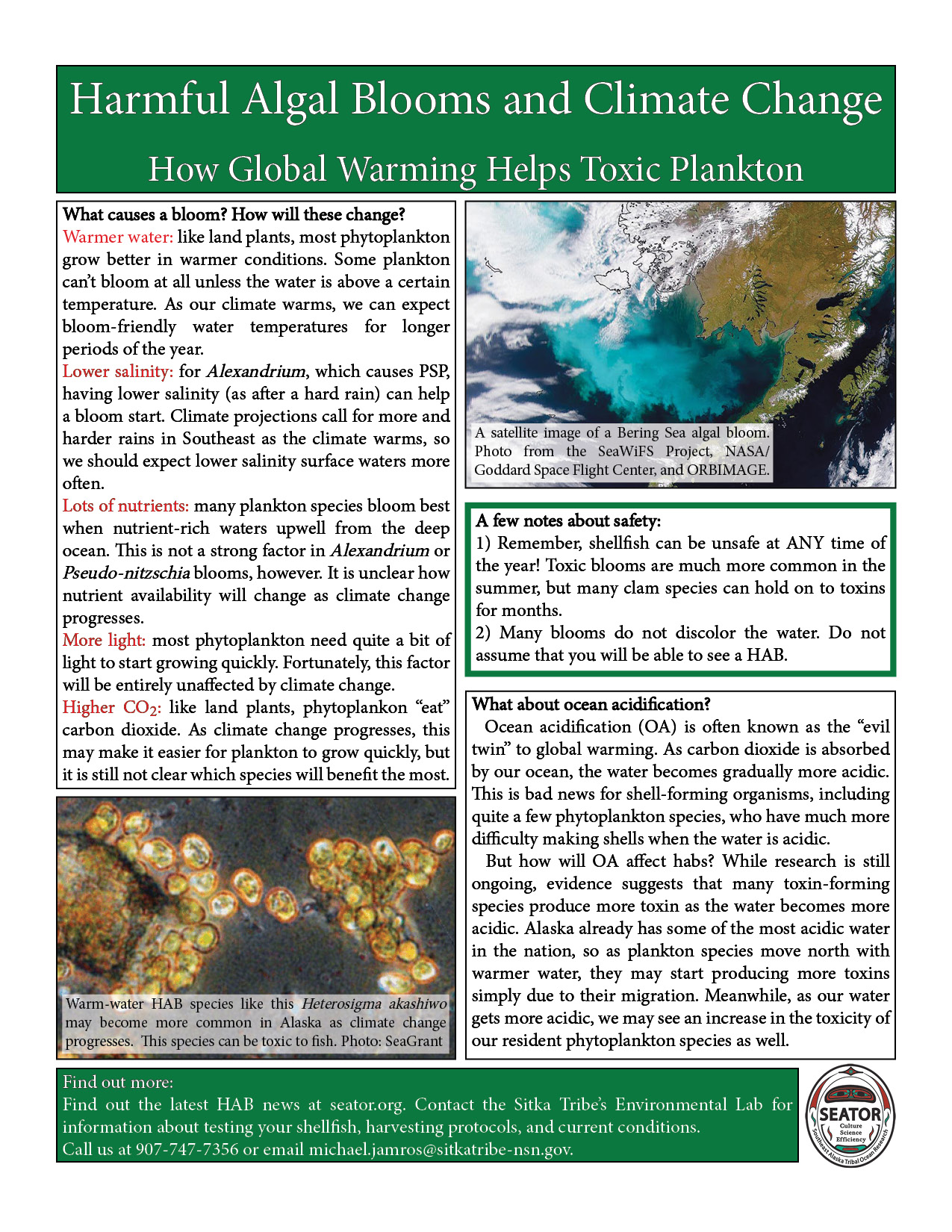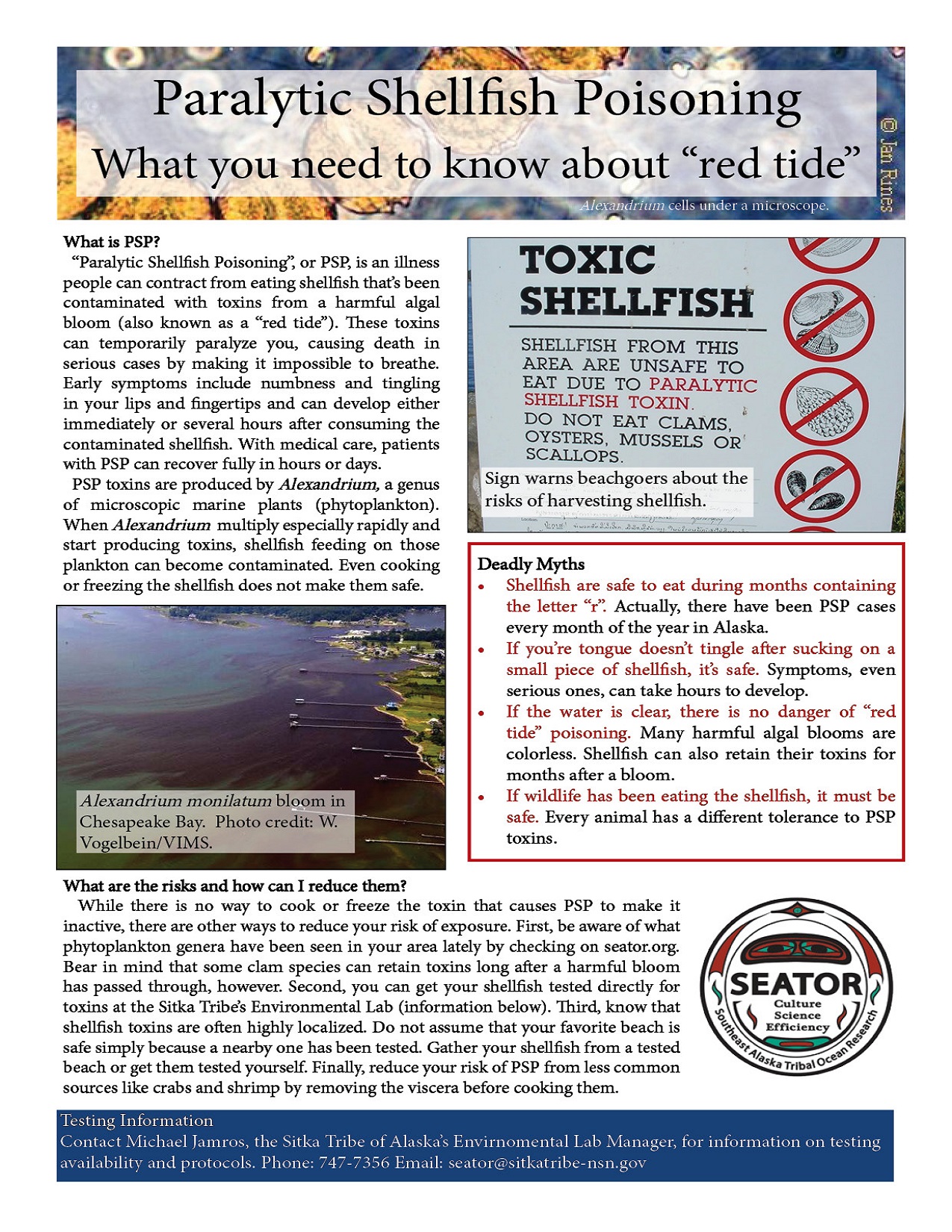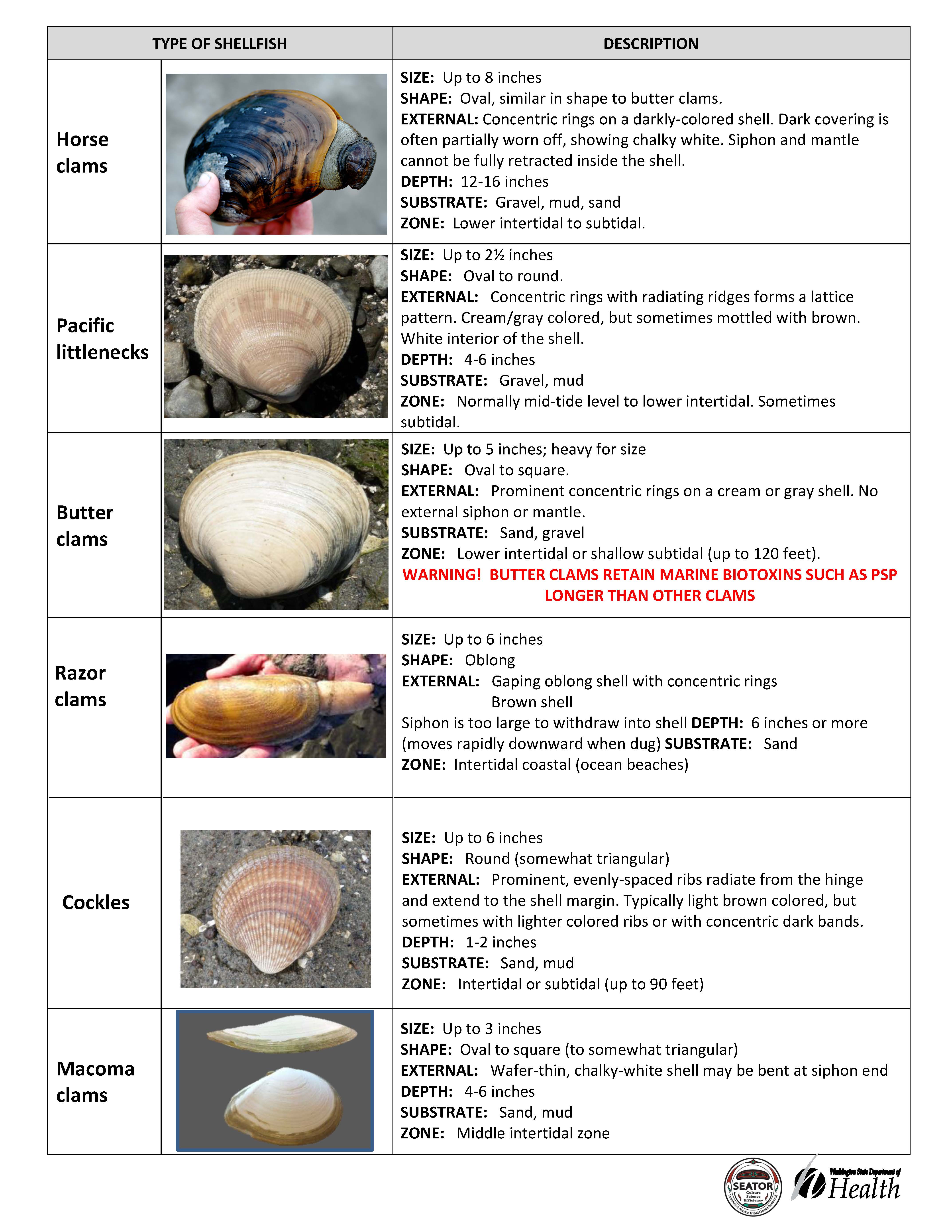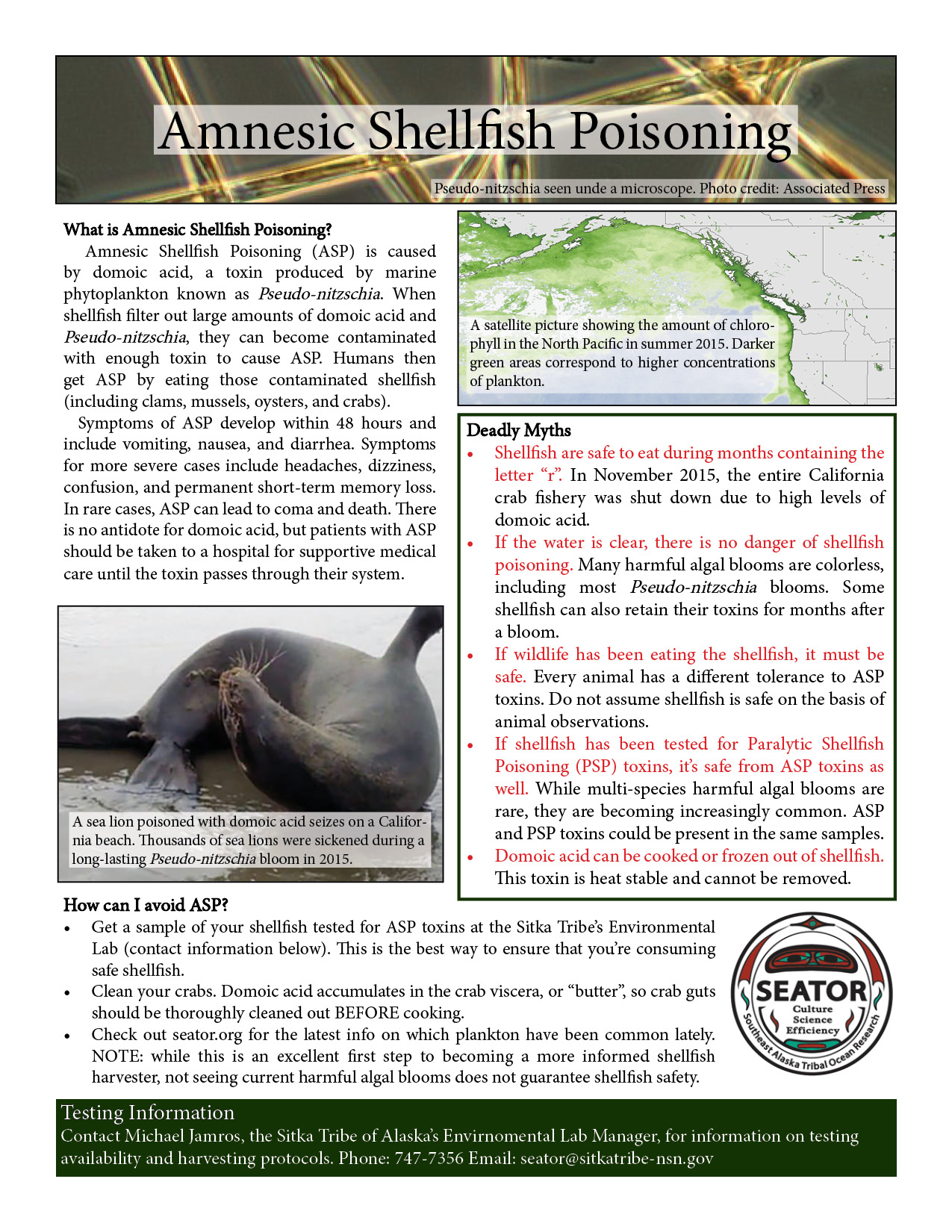{module_pagename}
While SEATOR is expanding the scope and variety of our ocean research programs, our primary motivation for doing so will always be food security. To improve Tribal and rural access to traditional foods, we're monitoring toxic plankton blooms, testing shellfish for dangerous toxins, monitoring ocean chemistry, working with the EPA to raise water quality standards, and starting a heavy metals testing program. Find out more about the many aspects of our shellfish program below.
Learn about our shellfish testing program by watching this short video:
Safe Shellfish from Artchange, Inc. on Vimeo.
Curious about the specifics of shellfish poisoning, testing, and more? Try these briefing sheets:
Where can you find additional information about shellfish monitoring?
- Alaska Department of Environmental Conservation Food Safety and Sanitation Program
- Kachemak Bay National Estuarine Research Reserve
- Your local Tribal government
- Alaska Harmful Algal Bloom Network
More about Harmful Algal Blooms (HABs)
Phytoplankton, microscopic marine plants or algae, are normal components of all aquatic environments. They are the base of both the marine and freshwater food webs and produce 50% of the world's oxygen. As with terrestrial plants, different phytoplankton species grow best under different conditions. When water conditions allow one species to multiply especially rapidly, it is known as a "bloom" or an "algal bloom". Large phytoplankton blooms are a natural part of every marine ecosystem and are frequently an important food source for predators, but some phytoplankton species can produce harmful biotoxins or can irritate the gills of small fish. When a phytoplankton bloom causes large fish kills or produces a lot of toxins, it is known as a harmful algal bloom (HAB).
HABs are present and growing threat to virtually all U.S. coastal waters. Their impacts can include devastating economic impacts to farmed fish or shellfish, large die-offs of marine birds, and - most saliently for Alaskans - wide-scale contamination of shellfish. When a phytoplankton bloom produces biotoxins, they can quickly accumulate in shellfish. While those toxins may accumulate within a few days of the bloom, they often take months or years to fully leave the shellfish, compounding the human health risk. The Southeast Alaska Tribal Toxins (SEATT) partnership works to detect harmful algal blooms by sampling the water for potentially harmful plankton species and testing shellfish for high levels of toxins.
Some harmful algae will form resilient cysts and will settle into the sediments in the winter. These cysts then act like the seeds of plants, releasing the planktonic cells when the water temperatures become more favorable. Since these cysts beds can trigger harmful algal blooms year after year, it is important to map out where they are, especially in the case of the PSP-causing Alexandrium cysts. The SEATT partnership is working with Dr. Elizabeth Tobin at UAF's School of Fisheries and Ocean Sciences to map Alexandrium cysts near our partner communities to help us better predict where HABs are most likely to reoccur and where shellfish could have perpetually unsafe levels of toxins. The map below is a preliminary look at Dr. Tobin's research and will be updated as future samples are collected.
.png) inks list
inks list
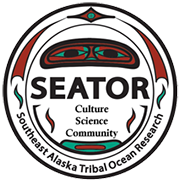
 E-mail
E-mail 1 (907) 747-7395
1 (907) 747-7395 
